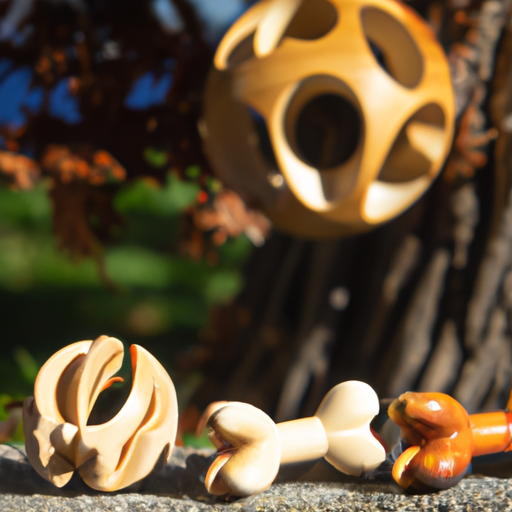As dog lovers, we understand that chew toys are not just luxuries for our furry friends – they are necessities. Chewing is a natural behavior for dogs, as it helps reduce stress and can also control barking, digging, or other destructive behaviors. The problem is, dogs love to chew so much that they don’t always know what’s good for them. You may have noticed your dog occasionally chewing a piece of wood and realized your dog finds wood tasty. So, what wood is safe for dogs to chew?
Table of Contents
– Why Dogs Chew on Wood
– Safe Wood for Dogs to Chew
– Unsafe Wood for Dogs to Chew
– Alternatives to Wood for Dogs to Chew
– Frequently Asked Questions
Key Takeaways
– Not all types of wood are safe for dogs to chew.
– Safe wood types include apple, elm, hickory, and fir.
– Unsafe wood types include cherry, black walnut, yew, and red maple.
– Alternatives to wood chew toys can include rubber or nylon toys, rawhide bones, and dog-safe bones.
Why Dogs Chew on Wood
Dogs chew on wood for a variety of reasons. Puppies, for example, chew to alleviate the pain and discomfort of teething. Adult dogs, on the other hand, often chew to keep their jaws strong and teeth clean. Chewing also combats boredom and can relieve mild anxiety or frustration.
However, not all wood is created equal. Some types can splinter and cause serious injury to your dog’s mouth, throat, or intestines. Others might be treated with chemicals that are harmful if ingested. Therefore, it’s crucial to understand which types of wood are safe for your dog to chew.
Safe Wood for Dogs to Chew
When it comes to safe wood for dogs to chew, the options are relatively limited. You’ll want to stick with hard, durable woods that won’t easily splinter.
Apple Wood: Apple trees are a popular choice for dog chew toys. They’re hard and durable, offering a satisfying crunch for your dog’s powerful jaws. But, they’re also free of harmful toxins, ensuring they’re safe for your pup to ingest over time.
Elm & Fir Wood: Similarly, elm and fir trees are both safe options for your dog’s chew toys. Just be sure to source untreated wood, as some trees are sprayed with pesticides or other chemicals that can be harmful to dogs.
Hickory Wood: Hickory is another safe wood for dogs. It’s hard, durable, and resistant to splintering, making it a great option for heavy chewers.
| Safe Woods | Description |
|---|---|
| Apple | Hard, durable, and toxin-free |
| Elm | Safe if untreated |
| Fir | Safe if untreated |
| Hickory | Durable and resistant to splintering |
Unsafe Wood for Dogs to Chew
Just as there are safe woods for dogs to chew, there are also dangerous ones. These woods can splinter easily, have toxins, or can cause allergic reactions.
Cherry Wood: While cherry wood is a popular choice for furniture and other home goods due to its lovely red hue, it’s not safe for dogs. Cherry wood can splinter easily, leading to potential injuries.
Black Walnut: Black walnut wood is toxic to dogs and can cause vomiting, tremors, and even seizures.
Yew Wood: Yew is another unsafe wood. The entire tree is toxic to dogs, including its leaves, bark, and seeds.
Red Maple: Red maple is unsafe for dogs to chew as it can cause a condition called “maple poisoning,” which can lead to anemia and other health issues.
| Unsafe Woods | Issues |
|---|---|
| Cherry | Splinters easily |
| Black Walnut | Toxic to dogs |
| Yew | Entire tree is toxic |
| Red Maple | Can cause “maple poisoning” |
Alternatives to Wood for Dogs to Chew
If you’re uncomfortable with the idea of your dog chewing on wood, there are plenty of alternatives available.
Rubber or Nylon Toys: These are typically safe for dogs and can provide plenty of chewing entertainment.
Rawhide Bones: Rawhide bones can be a good option, but they should always be used under supervision as they can pose a choking risk.
Dog-Safe Bones: Bones specifically made for dogs, such as those you can find on One Top Dog, are a safe alternative. These bones are designed to be chewed and ingested, providing your dog with some nutritional benefits as well.
Frequently Asked Questions
Q: Can dogs chew on pine wood?
A: While pine is not toxic, it is a soft wood and can splinter, which may cause harm to your dog if ingested.
Q: What if my dog ingests an unsafe type of wood?
A: If your dog ingests an unsafe type of wood, it’s best to contact your veterinarian immediately for advice.
Q: Are there specific chew toys you recommend for dogs who love to chew?
A: Yes, check out these chew toys recommended by One Top Dog.
In conclusion, while some woods can be safe for dogs to chew, it’s always important to monitor your dog and ensure the wood is untreated and not prone to splintering. To be on the safe side, consider alternatives like dog-safe bones or chew toys. And as always, when in doubt, consult with your vet. You can also check out this guide on One Top Dog for more information about dog safety.



